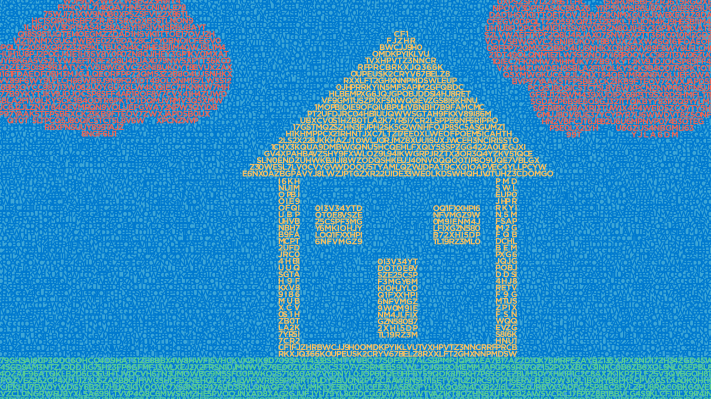Attendees of the Consumer Electronics Show in Las Vegas this year were confronted with a head-spinning volume of smart-home devices. From $5,000 refrigerators that can communicate when you’re running low on milk and eggs, to the ability to control lights, locks and thermostats from your mobile app or TV screen, these products and technologies all show very nicely — until the point when consumers are left to calculate when their smart-home investments will translate into cost savings, energy efficiency and enhanced convenience.
Really smart companies and entrepreneurs have built impressive pieces of the smart-home puzzle, but these pieces have not been connected yet in a way that has, to date, empowered a smarter consumer.
Parks Associates home energy management data released in March 2016 show 70 percent of households with smart-energy devices report saving money due to reduced energy consumption. However, the research firm noted challenges for vendors selling smart-energy devices based on cost savings, as 83 percent of U.S. broadband households do not know the price they are paying for electricity.
To close the gap between availability and adoption, all stakeholders in the smart-home ecosystem — device manufacturers, technology providers, utilities, integrators and interoperability standards bodies — must expand the focus from creating a smart home to empowering a smarter consumer through actionable data. This can be achieved through several strategies.
Need for Internet of Things-centric approach
An IoT-centric approach is critical, as evidence suggests consumers are building their smart home one device at a time. A 2015 Forrester survey finds that about 13 percent of consumers use one or more smart-home device, which means that, over time, there is a need to help consumers understand how multiple devices can control or work in conjunction with one another.
Empowering a smarter consumer depends on presenting actionable data in a highly consumable manner.
Will my home security system be able to control my lighting system? Will my smart thermostat talk to my smart meter, and vice versa? These are not questions that smart-home vendors have been forced to answer with early adopters — who often prioritize product innovation over practicality — but there are answers that mainstream consumers will demand before investing hundreds of dollars in thermostats, lights, locks, security systems and appliances.
If smart-home products, systems and standards can’t talk to one another, consumers are left with nice-to-have but not need-to-have technologies that may offer incremental benefits and some cost savings, but not enough to overcome consumer confusion, maximize savings and address cost concerns.
As more products come to market, the IoT-centric approach will become more critical: A recent Parks Associates white paper indicates that 40 percent of U.S. broadband households plan to purchase a smart-home device in the next 12 months, but adds that IoT interoperability is critical to driving consumer adoption of smart-home solutions going forward.
Promising efforts are underway to improve interoperability and align various wireless standards, such as ZigBee and Z-Wave, in order to simplify how IoT devices and sensors interact with one another. The more that industry can shift from proprietary products and competing standards that require significant integration efforts to an IoT-centric approach whereby consumers gain valuable, actionable intelligence based on real-time, shared device and sensor data, the more likely this is to spur connected-device adoption, from the early adopter to more of the mass market.
Data must extend beyond the smart home
We’ve used the phrase “smart home” quite a bit in this article, but the bottom line is that there is a massive difference between connected-home technology and smart-home technology — and that’s data: Actionable data that can create smart consumers.
It is encouraging to see the market moving from individual smart-home products that may or may not integrate easily with one another to smart-home “islands” that link a handful of devices and services.
Amazon Echo is one example of a device that launched with minimal expectations but has received increasingly favorable reviews for enabling consumers to voice-activate smart-home devices and services inside and outside the home, ranging from the ecobee and Emerson connected thermostats to Philips Hue light bulbs to smart-home platform Samsung SmartThings, and extending the IoT outside the smart home to integration with services such as Uber and Dominos Pizza.
Data must be consumable
Much of the attention around today’s smart home focuses on new product features and functionality, rather than the IoT-driven data these devices can deliver to consumers. This is why, to an extent, the smart home has realized a fraction of its full potential.
While IoT allows for the gathering, processing and analysis of massive amounts of data from a broad range of sensors inside and outside the home, there remain challenges to presenting this data to consumers in a unified and intuitive way.
Competing standards and device compatibility issues impede a singular view of data, and often for data that is made available the consumer must jump through hoops to locate and understand it. Empowering a smarter consumer depends on presenting actionable data in a highly consumable manner so that users can easily understand, for example, how automatically adjusting a thermostat two degrees impacts energy costs, or how external weather conditions impact the energy required to heat or cool the home.
Knowledge is power. All stakeholders in the smart-home ecosystem must empower a smarter consumer for the smart-home market to flourish.
